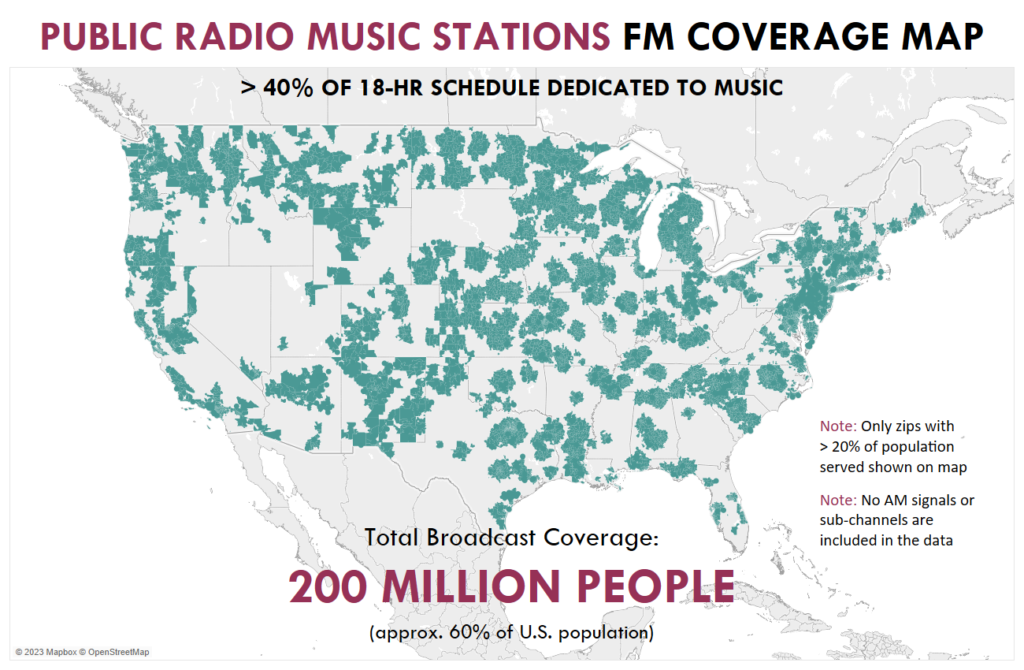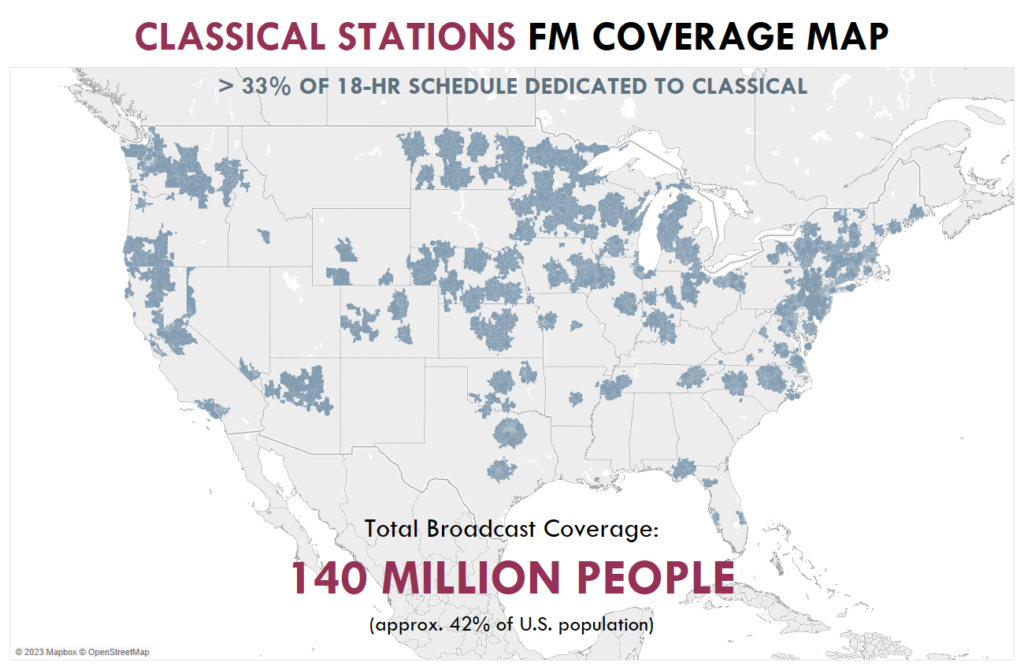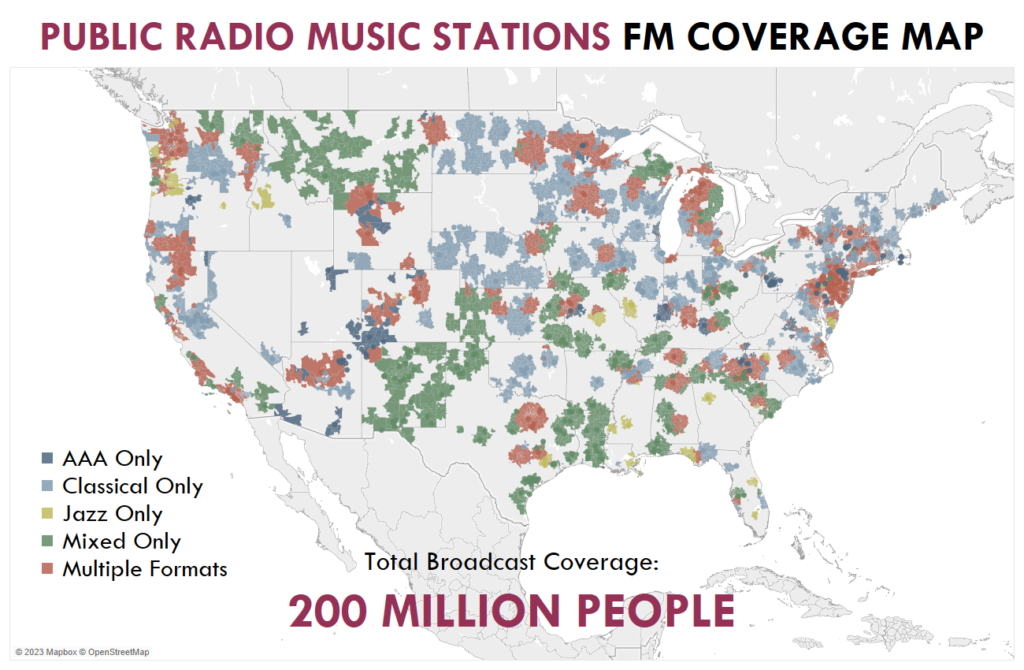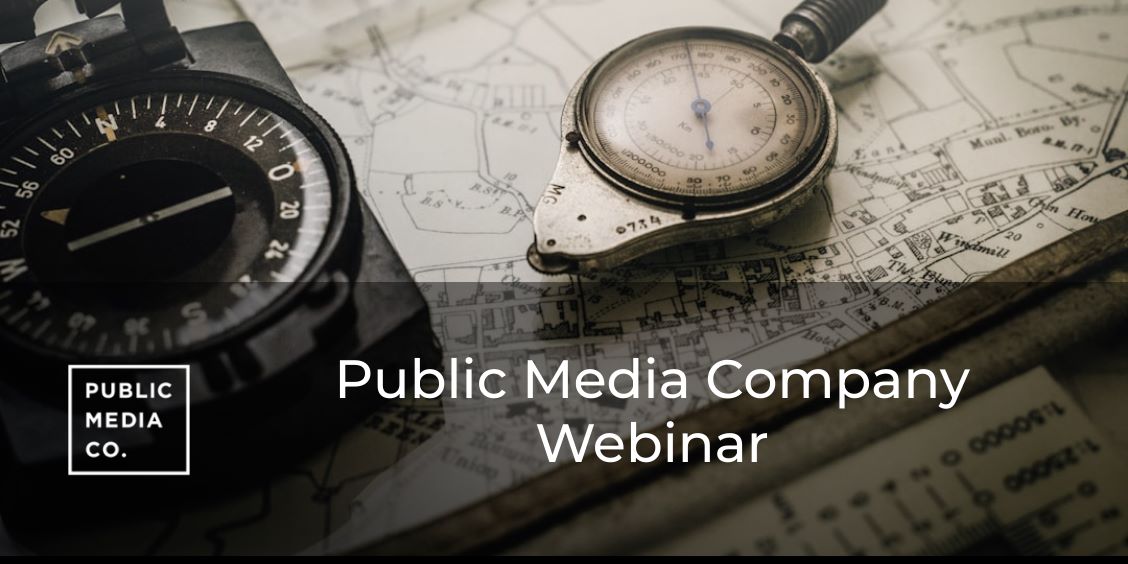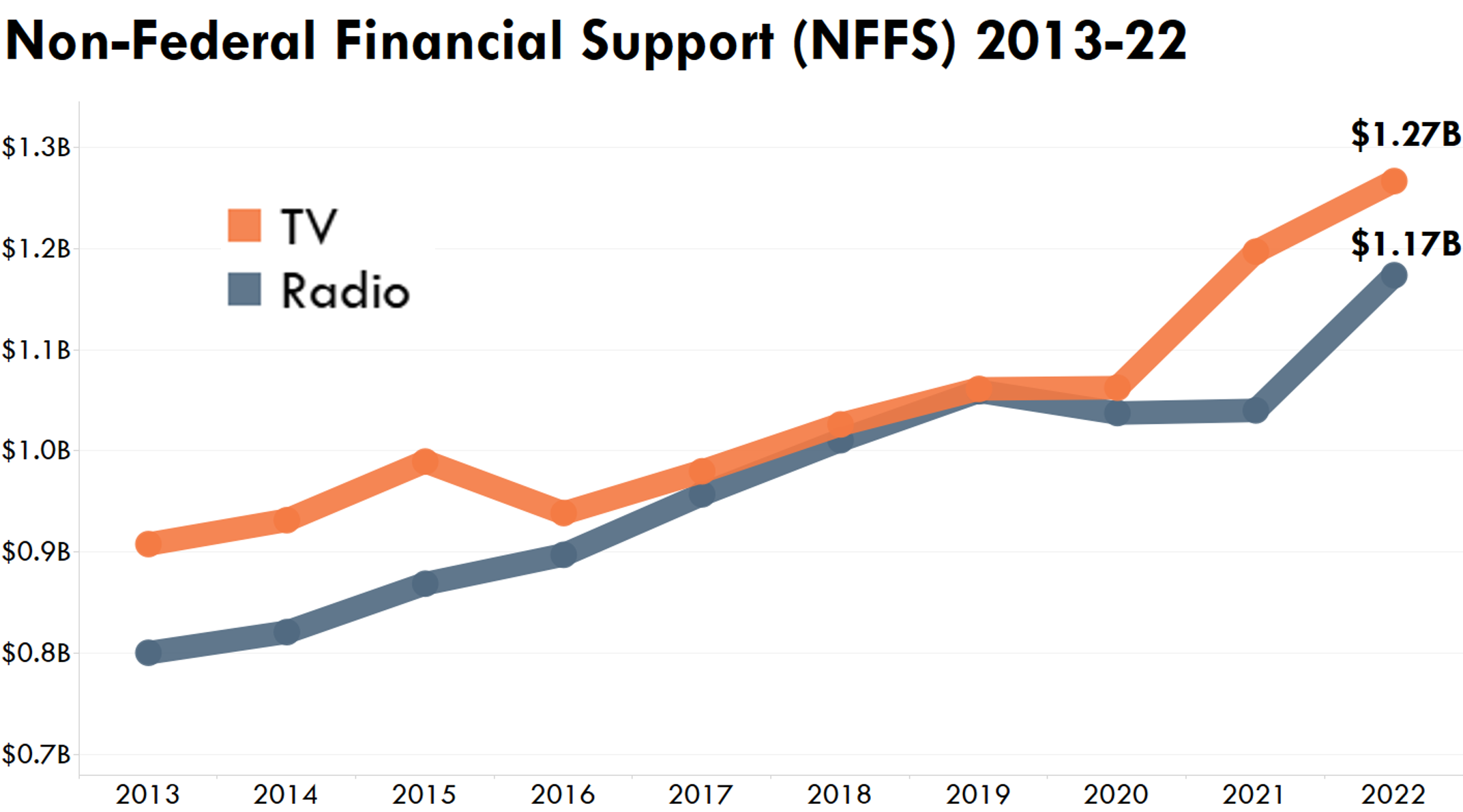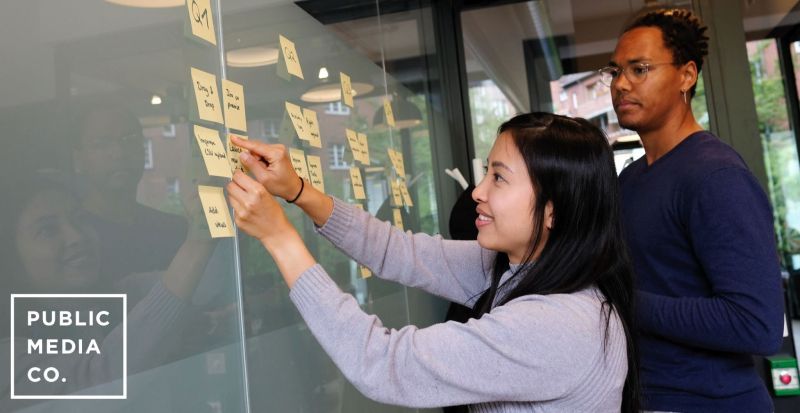Public Media: The Foundation of Local Music Ecosystems
Local news has been getting a lot of attention in recent days with the announcement of a $500 million fund to revitalize local news through the Press Forward initiative. Local news ecosystems are essential to our democracy and need new investment but let’s also not forget that music plays a critical role in connecting people in local communities all across the country.
We all know that music is fun and a source of great joy but it’s also a force for social and personal wellbeing that connects people together in many different ways – and public media is often the heart of a local music ecosystem. Over the past year, Public Media Company, in partnership with WRTI’s Bill Johnson, WXPN’s Roger LaMay, and NPR, has been analyzing the reach of public radio music – and it’s big. It’s very big. At least 200 million people are served by local public radio signals dedicated to music. A number that would grow considerably if we included all the other ways that public media engages communities through music, including events, TV/video, digital, and radio signals that only air music for part of the day.
How did we arrive at 200 million people? The number is based on the population covered by public radio FM broadcast signals that dedicate at least 40% of their 18-hour schedules to music. Only CPB-qualified stations are included. Format information is from NPR. Coverage on AM signals or sub-channels is not included. Reach and engagement through non-broadcast platforms is also not included. We also know that we haven’t yet captured the full extent of broadcast signals – so 200 million people is the minimum number of people currently served!
We also dug a bit deeper and found that the classical format reaches the most people over the airwaves. More than 140 million people around the country can tune into a broadcast radio signal airing classical music (defined as at least 1/3 of the schedule dedicated to classical).
Other popular formats for public radio music are jazz, reaching approximately 61 million people, and AAA/eclectic which reaches 60 million people. Almost the same number of people (62 million) are reached by mixed format signals. As the map below shows, many areas of the country are served by multiple public media music stations and so can listen to a variety of genres.
In many areas across the country, it is only because of public media that certain formats are still heard and enjoyed. It’s also underappreciated that public media isn’t only a conserver of musical genres, it’s also an innovator. Public media organizations have expanded into new formats like urban alternative that commercial media has either ignored or abandoned and is constantly re-evaluating how best to meet changing community needs, whether that’s through traditional or digital/social engagement.
We’ve learned from our research that public media’s local music reach is vast but we’ve also learned that we only know part of the story. We know the data isn’t perfect. We know it’s only broadcast. But we think it’s a useful start and would welcome any suggestions to help us make it better. Please reach out to Steve Holmes with thoughts, suggestions, questions, or concerns.

